I have been meaning to start a blog for a long time. A bunch of things have held me back: what tools to use; too busy writing “formal” trip reports of birding expeditions; general inertia. If I am most honest with myself perhaps main factor is a fear of lack of eloquence, the fight I have to get words down that I am happy with or proud of, a lack of natural humour to my writing, especially abut this thing that drives much of my travel: birding.
But this is just a blog, and ultimately it doesn’t have to read like a novel. So here goes, my first post. I might at some stage have to delve into history and write up some of my other short trips that have not made into proper trip report form and assumed pride of place on cloudbirders (where I rank in the top 50 most prolific independent authors; #37 to be precise!), but for now I’m starting with a family holiday, fresh in the memory.
Nikki suggested we spend a week of the school holidays in Sydney. The girls had only been there in 2004, when too young to remember. I insisted that we could not really afford to fly and batted away their protests at the long, two day drive that would be required in each direction. I actually quite like the feeling of the countryside unfolding slowly under huge skies that comes with a road-trip. It is also a chance to do a little bit of birding.
We set out on Good Friday at around 8am — early by our standards — and took most direct route from Adelaide, down past Tailem Bend then onto the Mallee Hwy. A picnic stop at Murray-Sunset N.P. might have been great had I know where to go, but actually just resulted in an off-road 30km birdless detour. From there past Ouyen, over the River Murray at Tooleybuc and out onto the Hay Plain. Stretching for nearly 300km, the plain is one of the flattest places on earth. As we trundled through the featureless countryside, the local sheep station, “Hell’s Gate” lent a special pertinence to Nikki’s self-described state in the passenger seat as being in purgatory. While Erica sulked in the back, I made a point of noting things of interest for her, such as the occasional tree or bend in the road. If I am going to labelled an annoying dad, I might as well live up to it.
We arrived in Hay late afternoon and had a drink and dinner in a local pub before kipping in a motel.
The following morning we took a more northerly route, the Mid-western Hwy, rather than the more direct one to Sydney. About an hour out of Hay I had the first of my two lifers for the trip: I spied two birds on the roadside with crests but these looked different from the usual crested pigeons. The cogs whirred for a bit before I realised we’d just driven past a pair of Cockatiel at 110km/h. I banged on the brakes and turned around (you can’t do that on a UK motorway!) and of course immediately flushed them. Fortunately they returned and had great views in the bins, but sadly the camera was packed away tightly in the boot.
I saw a few more Cocktiel as we tracked east, also noting lots of roadside White-winged Chough and Apostlebirds.
Our picnic lunch stop, a minor diversion from the Mid-Western Hwy, was strategically chosen based on ebird research beforehand. I had previously dipped on Turquoise Parrots in the Capertee Valley, three times at Chiltern-Box Ironbark N.P., and in the Warby Ranges. Liam Murphy’s report of a pair in early April was the most recent I could find and was not far from our planned route on day 2. He supplied some detailed gen and I pulled up at a 90deg bend on the unsealed road through Bimbi State Forest around 1pm (GPS -33.919099, 147.932735), set the picnic rug, wolfed down my pie, and wandered to explore the immediate surrounds while the family had a more leisurely dining experience.
Liam had touted this spot as very birdy and he was not wrong. Although first impressions were it was fairly quiet, with just a few Jacky Winter flitting from branches, a little exploration began to reveal a good deal of quality. Best of all, within minutes I had several — perhaps as many as a dozen — Turquoise Parrots. I spent most of the next 45mins before we headed off trying for photos of the exquisite but rather nervous parrots, but I also picked up a bunch of other quality species, including Red-capped Robin, Hooded Robin, Horsfield’s Bronze-cuckoo, Grey Shrike-thrush, Rufous Whistler and Southern Whiteface.








The Turqs monopolised my attention for most of the time, but I did get a nice pic of one of the two Horsfield’s I saw:
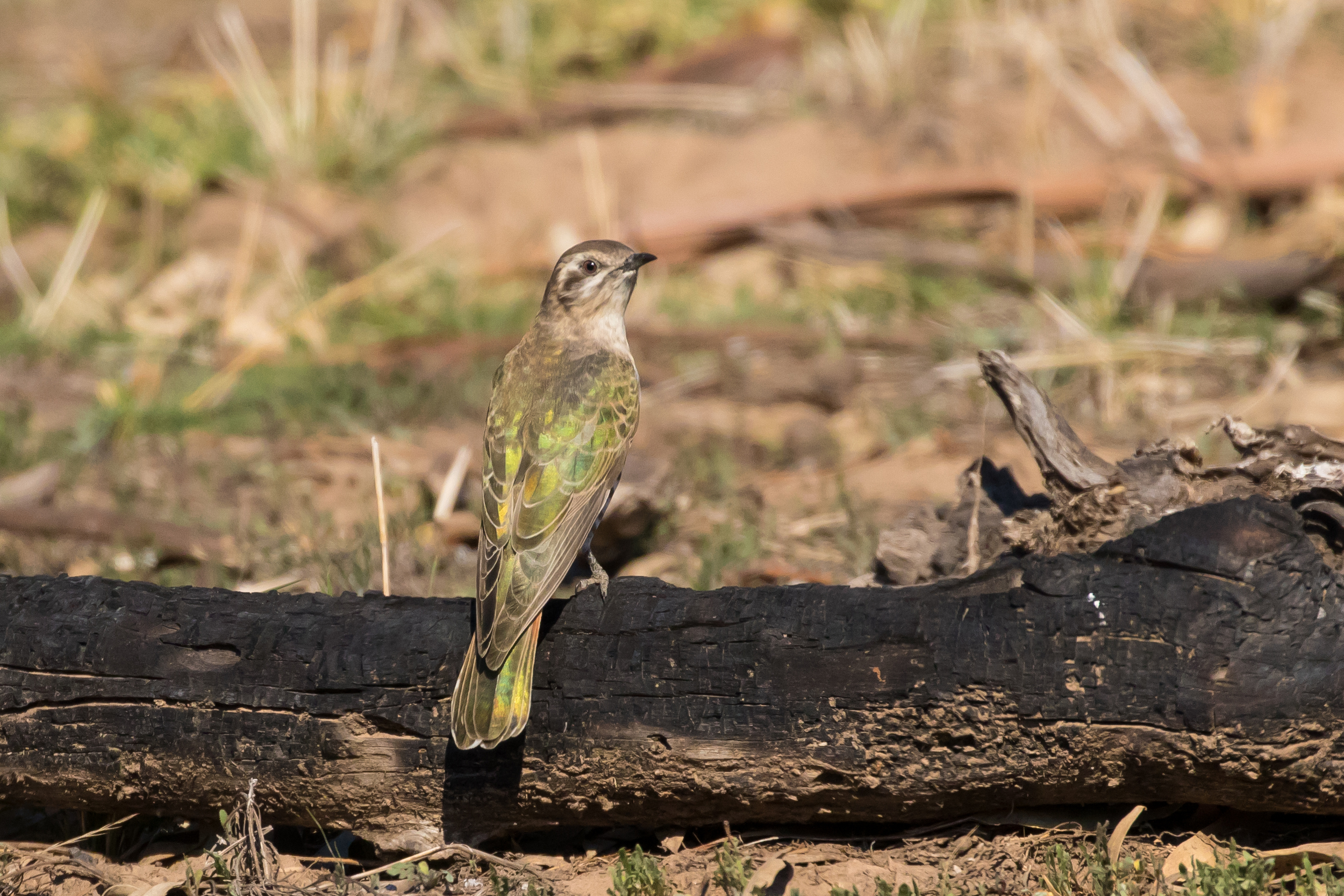
We spent the night in Capertee at the Capertee Royal Hotel. This was another place that I really enjoyed for its rustic charm. It is rather more welcoming and homely on the ground floor where there are open fires and a lively dining room. Up the very long, steep, narrow staircase to the accommodation leads to a rambling set of corridors which have to be negotiated to get from bedrooms to shared bathrooms. The girls were somewhat freaked out by the 50m walk along a darkened corridor while a weak flourescent light flashed and buzzed. “Feels like the Overlook Hotel from The Shining” was Nikki’s verdict. Another dad-fail.
I went out alone early the next morning into the Capertee Valley for two hours before breakfast but spent more time driving than birding. I drove as far as Genowlan Bridge fior the tiny chance of a Regent Honeyeater, but i would have been better off stopping at one of the “earlier” sites and birding. As I trundled along the unsealed section numerous groups of of to 15-20 Red-rumped Parrots flushed from the verge up into roadside trees. Capertee Valley is about an hour north of the main tourist area of the Blue Mountains, and though not perhaps quite as scenic, it is still stunning and much less visited. We would observe this astounding contrast a few hours later as we entered Katoomba.
I retraced my path into the valley to show the scenery to the family and snapped a pic of Double-banded Finch, a smart species I’d last seen in this spot 3.5 years earlier.



At the Echo Viewpoint (lookout to the famous Three Sisters) there was no parking and the crowds of tourists were 10 deep. We bailed and drove down into Sydney, thankfull that we were heading into the city and not in the 10km tail-back heading up into Katoomba.
We had a great few days in Sydney with the weather a uniformly glorious 25deg and even spent some quality time on the various beaches.


Saturday we headed back out towards Hay, this time taking the more direct southerly route that follows the Hume Freeway until just past Canberra. I had another birding stop lined up, this time Ingalba Nature Reserve, really just to see what I might encounter ona proper visit. We stopped for 20mins in this lovely Mugga Ironbark forest and I quickly built a nice list of birds including Striped Honeyeater, Little Friarbird, Yellow-plumed Honeyeater and Inland Thornbill. I would have loved to have an extended period here, and will have to return some time — preferably at dawn in the spring.
The approach to Hay was somewhat stressful. Though as we left Griffith I saw various Ringecks and Bluebonnets in the lovely evening light, I miscalculated the distance remaining from Griffith, and the last 70km of the journey was spent driving at 80km/h, drafting behind a caravan, to conserve fuel. We also seemed to pick up a good percentage of the biomass of the plain on the front grill:

We arrived at the motel with the fuel gauge anchored on empty. I only relaxed once I had a pint in my hand in the local pub.
Fortunately we had enough fuel to get us the further km needed beyond the motel to the servo next morning. I was able to put 59l of ULP into a 60l tank, showing how close we’d been to disaster.
We tackled the western half of the Hay Plain with the the same divided emotions. Me excited — and loving the wide open space, lack of people, plethora of Black Kites, Nankeen Kestrels, Emus, White-necked Herons, etc — the rest of the family willing it all to be over.
My picnic spot today was again chosen strategically. It has been 9 years since I have seen a Striated Grasswren (despite looking for them on each visit to Gluepot over the last 4 years) and I was keen to check out the Nowingi Track in Hattah-Kulkyne N.P. which was only a slight detour from the our route. As soon as we pulled up at the start of the track I wandered off into the spinifex while the family set up the picnic. Sadly, though I heard a Grasswren, I never saw it. Perhaps making a fundamental error, as I stalked towards where I’d heard the Grasswren, I got distracted by a thinner, weaker call, and was delighted to find a small family of the exquisite and endangered Mallee Emu-wren. They flitted about the spinifex in almost the exact spot I’d seen a pair in December 2013 (see report here) and proved tricky to photograph. By the time I returned to looking for the Grasswren it was now silent and still invisible.
With the family bothered by flies and understandably impatient to get going again I reluctantly gave up on the Grasswren and assumed my driving duties again. Though I harboured thoughts of one final stop at Monarto C.P. by the time we hit the South-eastern Freeway at Murraybridge I, too, was keen just to get home.
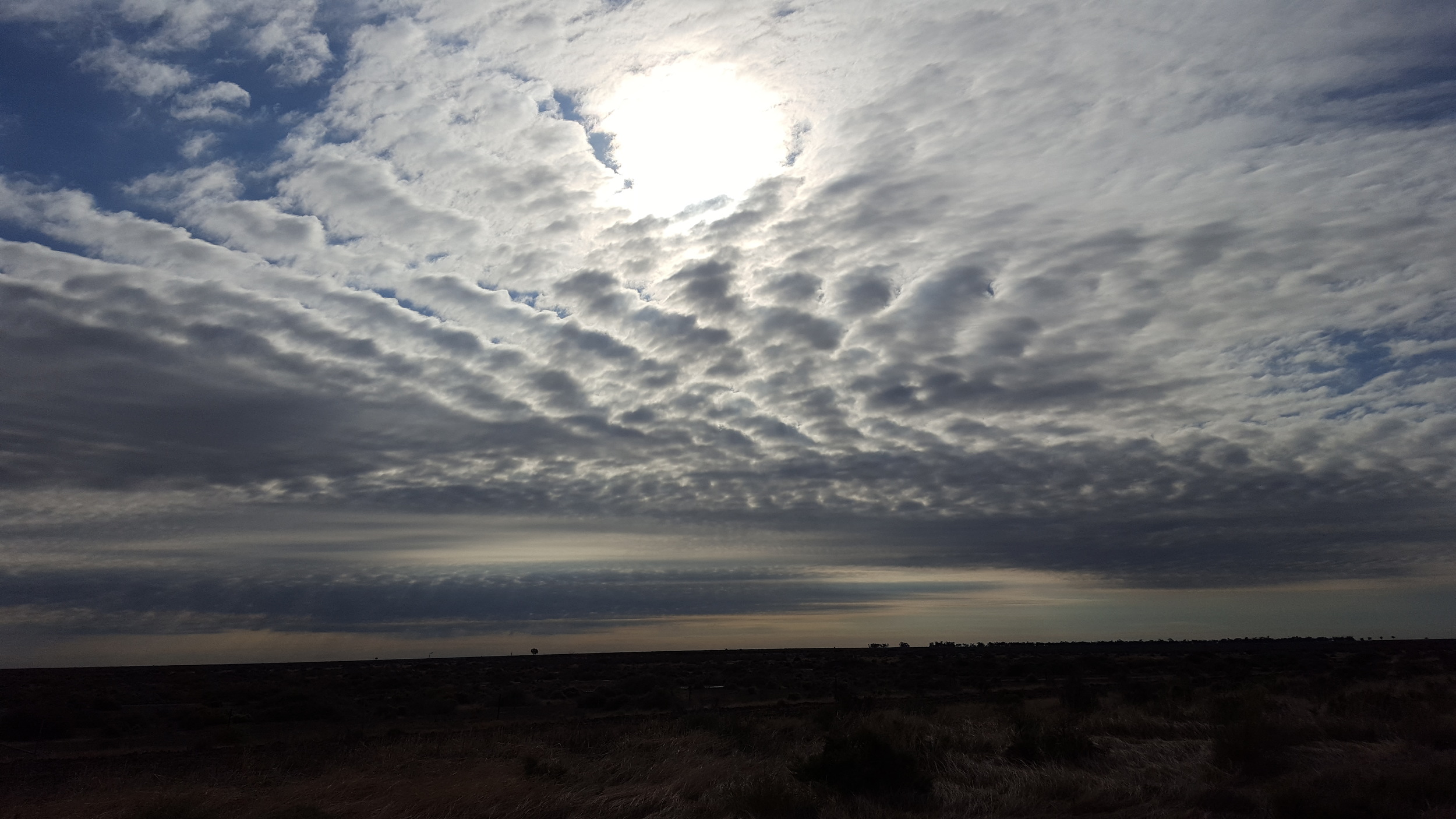

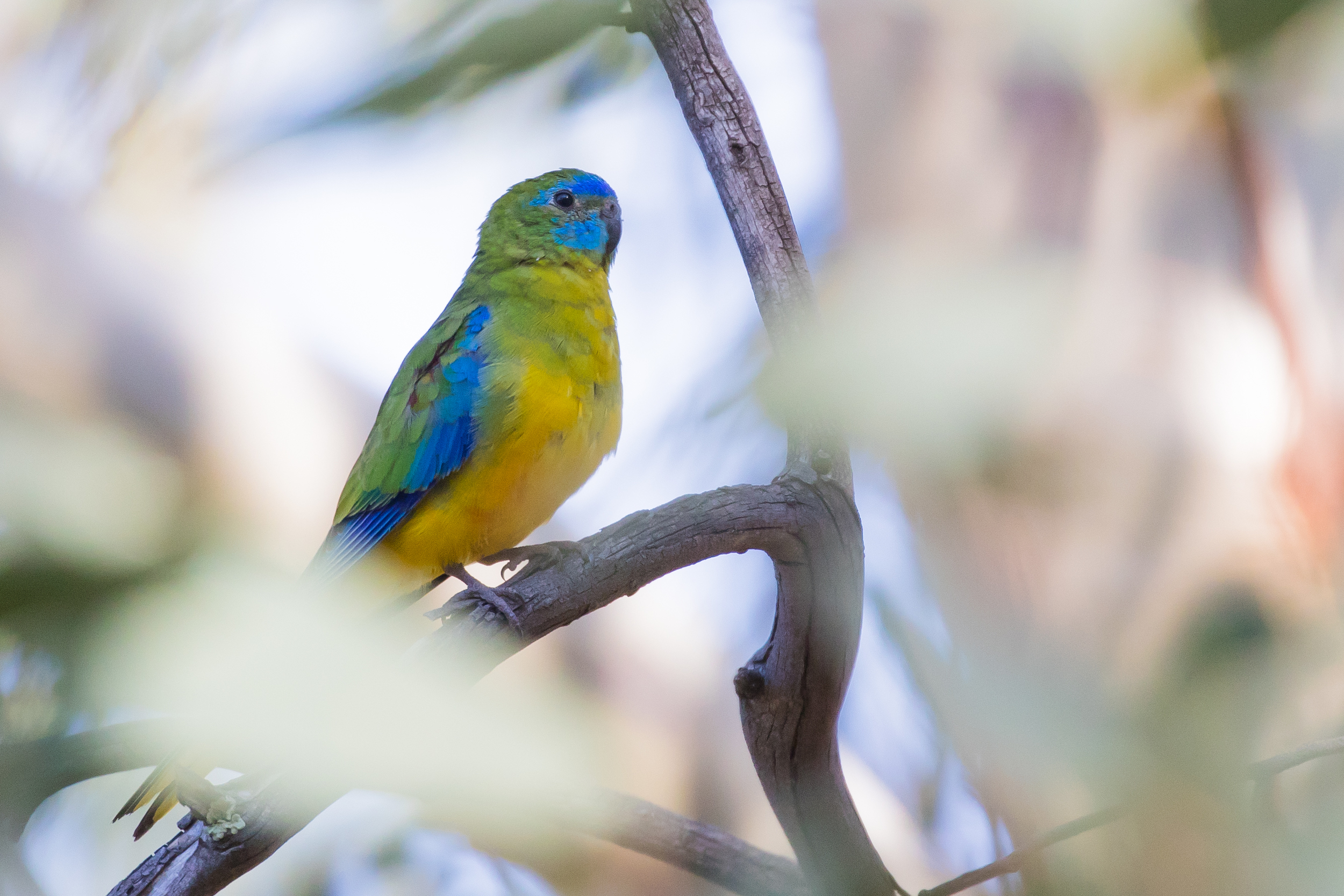
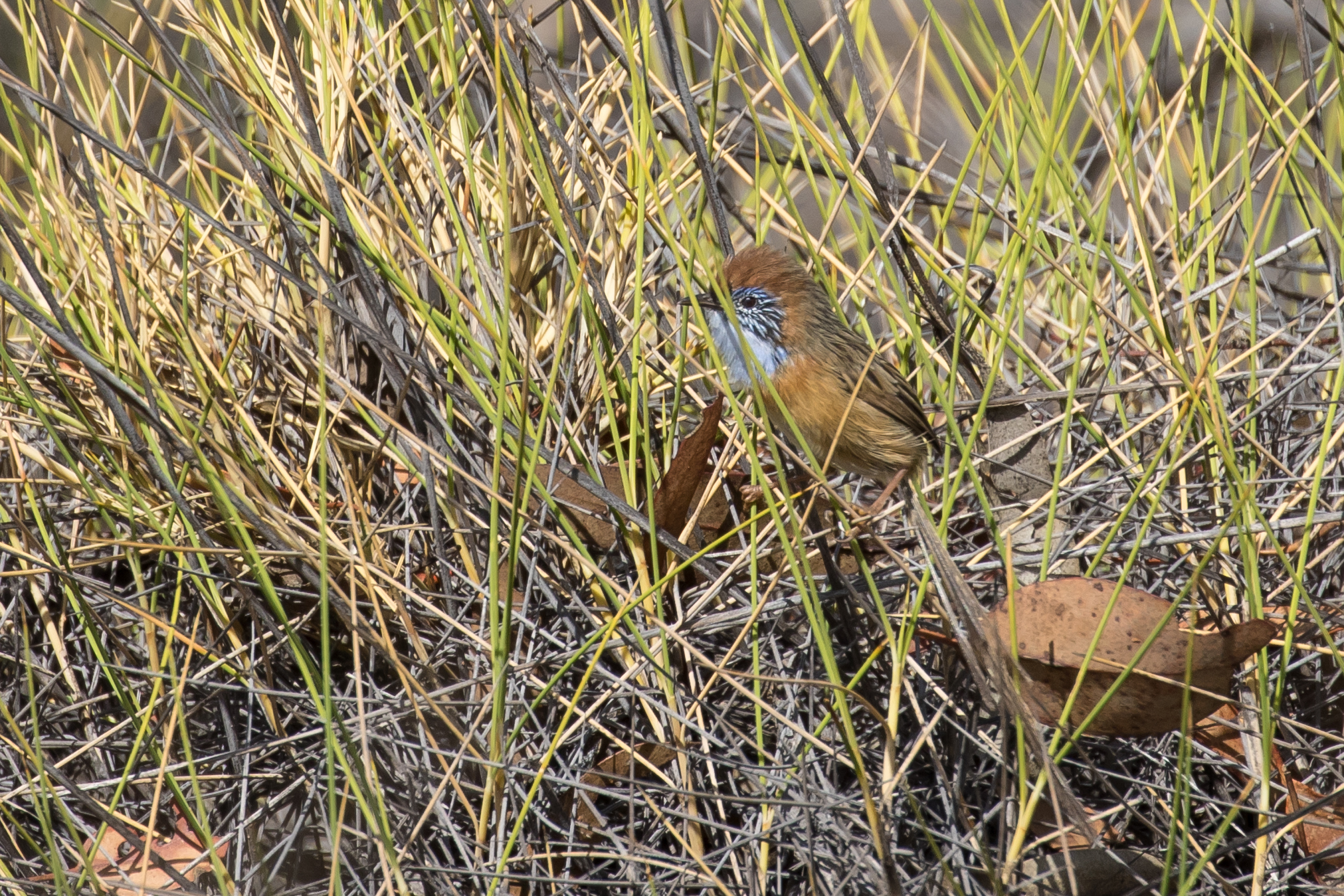

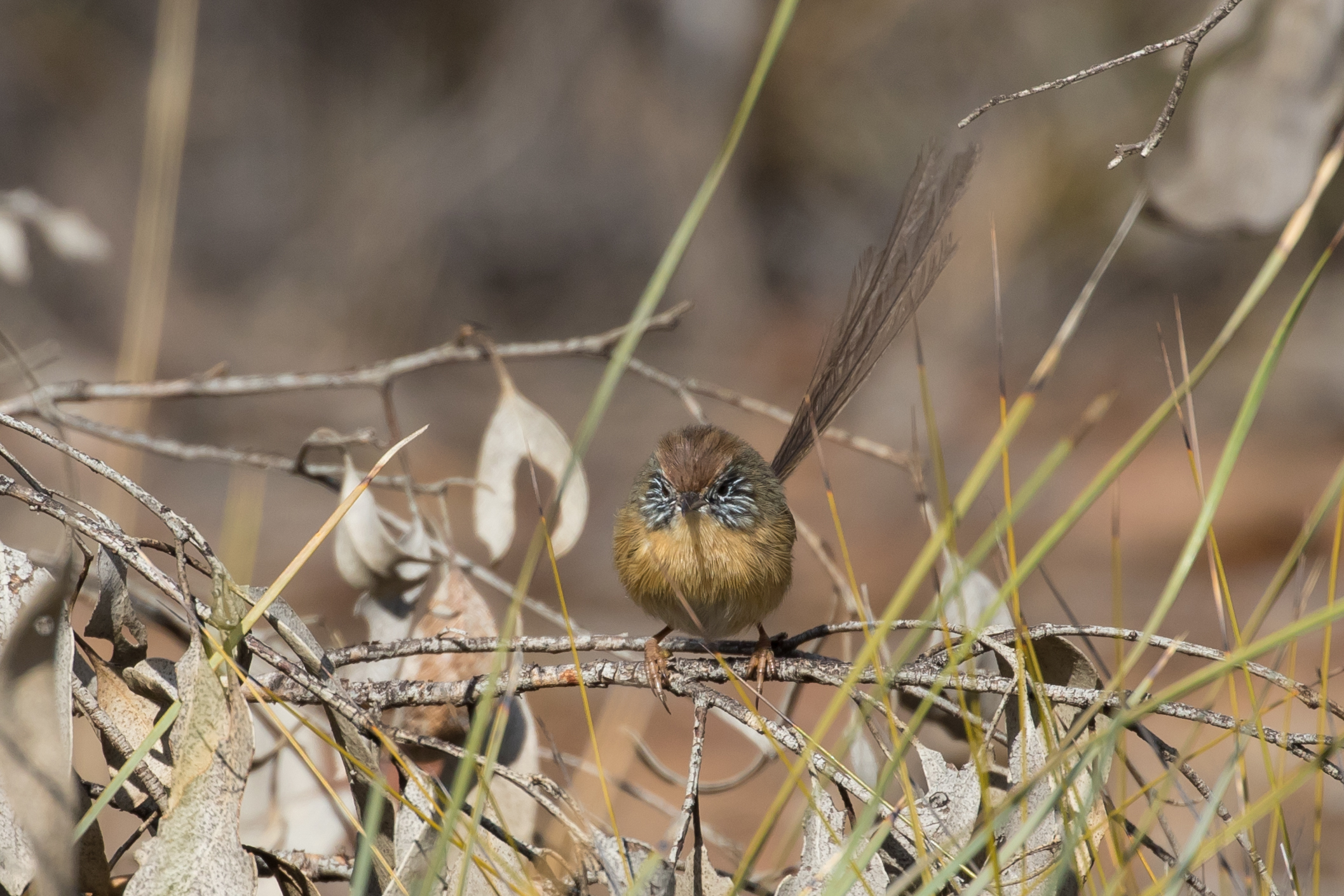
1 Comment
Comments are closed.